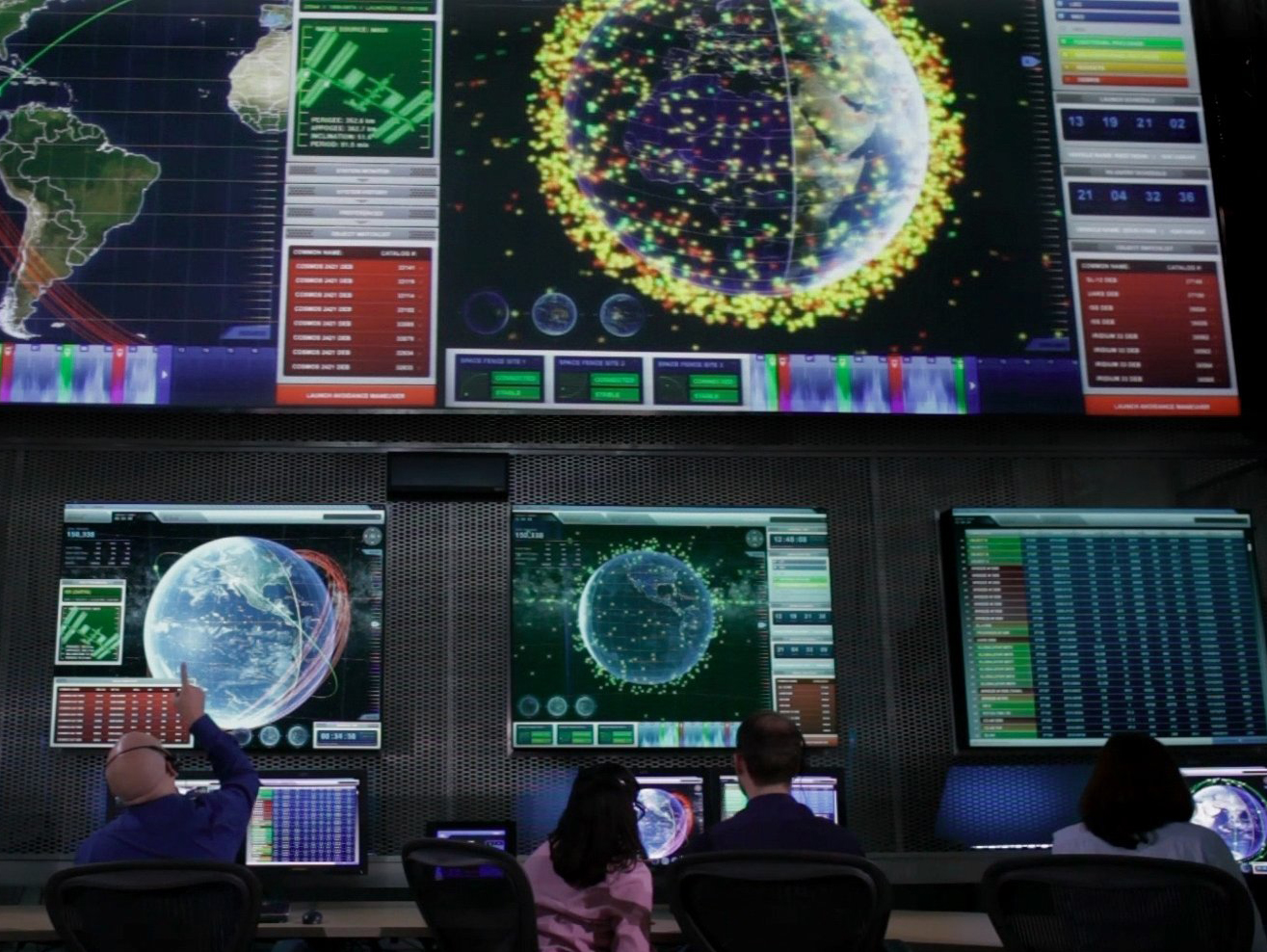Lockheed Martin Lands $914 Million Space Fence Contract

WASHINGTON — Lockheed Martin will build the U.S. Air Force's next-generation space surveillance system under one of the biggest military space-related development contracts up for grabs in several years.
The $914 million firm-fixed price contract was announced by the Defense Department June 2. The Space Fence has long been a top priority of Gen. William Shelton, commander of Air Force Space Command, but has been delayed and scaled back due to budget constraints.
Lockheed Martin Mission Systems and Training of Moorestown, New Jersey, and Raytheon Integrated Defense Systems of Tewksbury, Massachusetts, have spent years developing competing designs and prototypes for the Space Fence, an S-band radar which will be capable of tracking greater numbers of smaller objects than current U.S. space surveillance assets. [7 Wild Ways to Clean Up Space Junk
The contract is a pillar of the Air Force's space surveillance plans as top leaders repeatedly talk about space becoming congested, contested and competitive.
"We know that we've got to get better at [space situational awareness] because of the debris problem, because of the threat problem," Shelton said during a breakfast here in February.
Data from the Space Fence will be fed to the Joint Space Operations Center, which serves as the nerve center of U.S. military space operations, responsible for space surveillance, collision avoidance and launch support. The JSPOC is undergoing a three-phased hardware and software upgrade with an eye toward providing more precise and timely orbital information, among other goals.
Get the Space.com Newsletter
Breaking space news, the latest updates on rocket launches, skywatching events and more!
"We'll get a very good sensor that will help us keep track in a much larger volume sense and a much better resolution sense of the traffic in low Earth orbit," Shelton said of the Space Fence in a November 2013 speech.
The new system is expected to have a greater sensitivity than previous radars and will allow the Air Force to track baseball-sized objects as far out as 1,900 kilometers in space. It will be able to detect and track these objects without being specifically tasked to do so.

The Air Force has spent some $1.6 billion to date on the the Space Fence program, according to a March 2014 Government Accountability Office report.
The system initially will consist of a radar site on the Kwajalein Atoll in the Pacific Ocean near the equator. That site is expected to begin operating in November 2018 and the system is expected to reach full capability in 2022.
A possible second site is planned for western Australia and was included as an option on the contract, but further details are not expected to be released until after the first site is declared operational.
The Air Force had planned to award the Space Fence contract last year but delayed its selection due to budgetary difficulties that put the program's future in doubt. Lockheed Martin and Raytheon in February said they submitted revised fixed-price incentive-fee proposals to the Air Force to accommodate the delay, which the Air Force has said will add about $70 million to the program's.
The system replaces the recently mothballed Air Force Space Surveillance System, which was shut down in September due to budget constraints. The Air Force currently relies on other surveillance assets, including ground based radar and optical sensors and satellites.
In an April 22 briefing with reporters, Steve Bruce, vice president for advanced systems at Lockheed Martin Mission Systems and Training offered a fairly in-depth look at what a Lockheed Martin-built Space Fence would entail.
Specifically, he said, the Space Fence would track about 200,000 objects and make 1.5 million observations per day, about 10 times the number made by previous radars such as the AFSSS. Air Force leaders have estimated that the actual number of objects orbiting Earth is closer to 500,000.
The new system would have a maximum coverage area of 40,000 kilometers, whereas the previous AFSSS covered 22,000 kilometers maximum, Bruce said.
In a statement, Mike Nachshen, Raytheon spokesman, said "Raytheon is the world leader in advanced radar technology, and has successfully designed, developed and deployed large radars around the globe, including in austere locations like Thule, Greenland. Raytheon has been notified by the Air Force on their Space Fence decision; pending our post-decision debrief with the Air Force, it is inappropriate to comment at this time."
Follow Mike Gruss on Twitter: @Gruss_SN. This story was provided by SpaceNews, dedicated to covering all aspects of the space industry.
Join our Space Forums to keep talking space on the latest missions, night sky and more! And if you have a news tip, correction or comment, let us know at: community@space.com.
Mike Gruss is a veteran defense reporter and Editor-in-Chief of Sightline Media Group, which includes Army Times, Air Force Times, Dense News, Military Times and Navy Times. From 2013 to 2016, Mike served as a Senior Staff Writer for SpaceNews covering national security space programs and military space policy in the U.S. Congress. Mike earned a bachelor's degree in English and American Studies from Miami University and has previously wrote for the Journal Gazette in Fort Wayne, Indiana and the Virginian-Pilot in Virginia before joining SpaceNews. Prior to joining Sightline in 2017, he was a senior editor of FedTech magazine covering technology in federal government. You can see Mike's latest project on Twitter.










